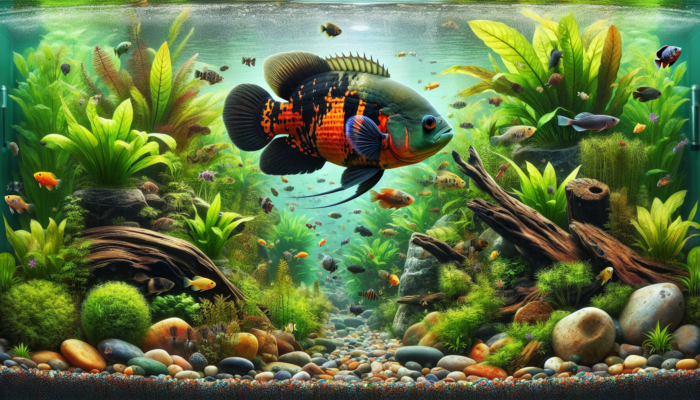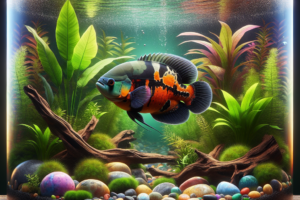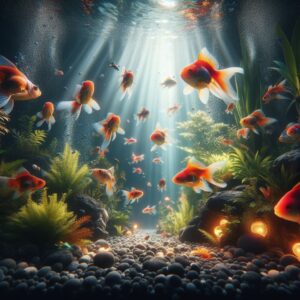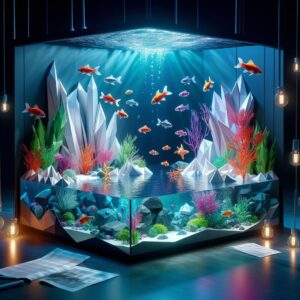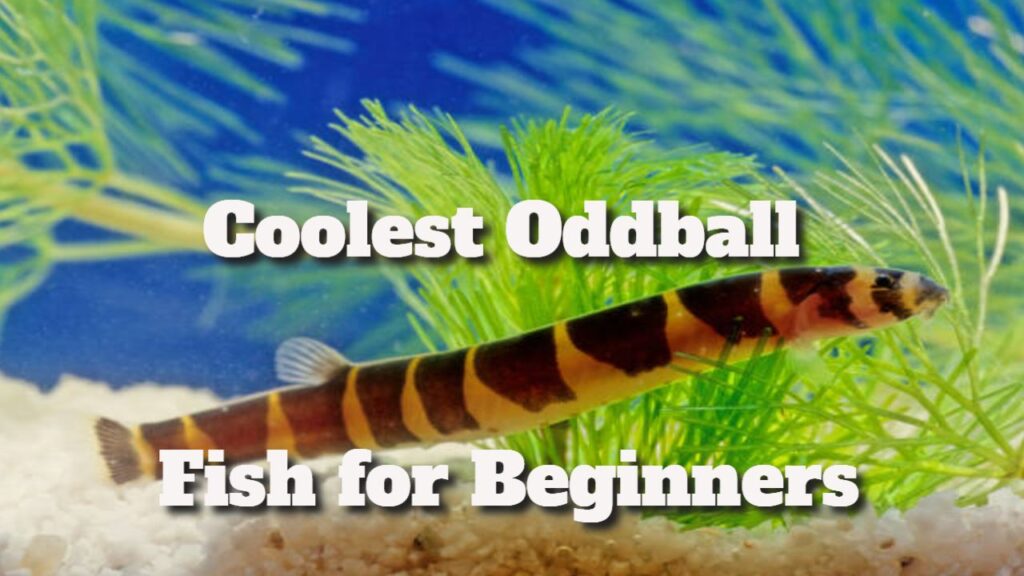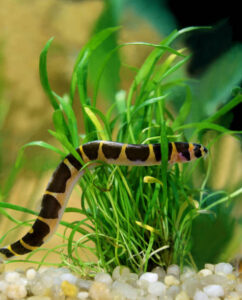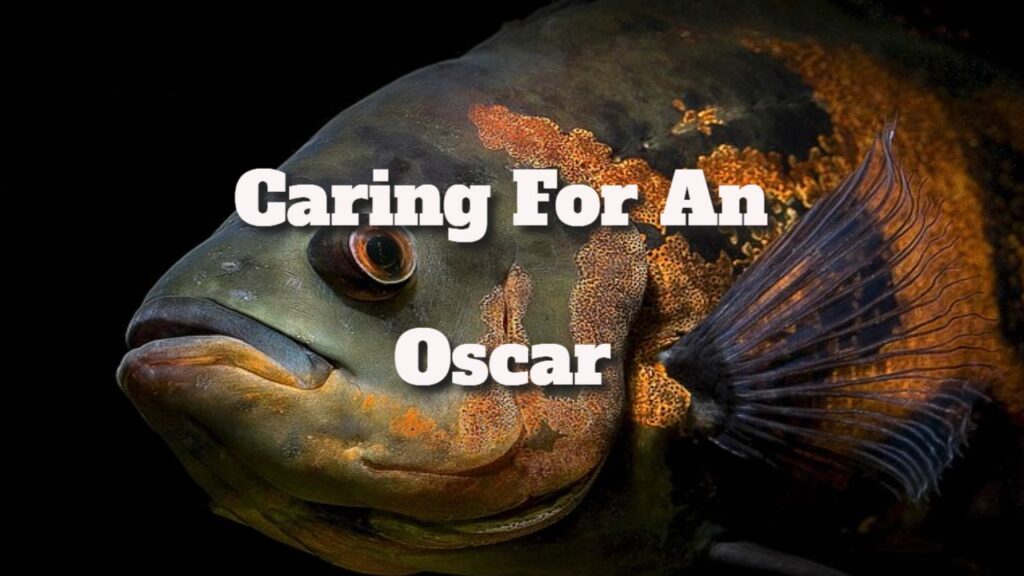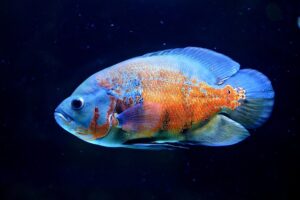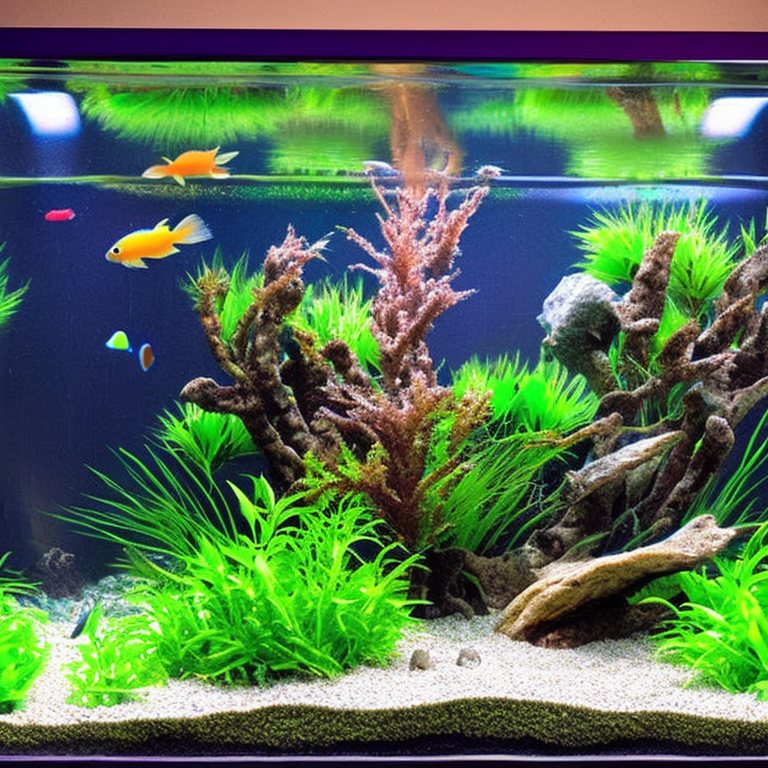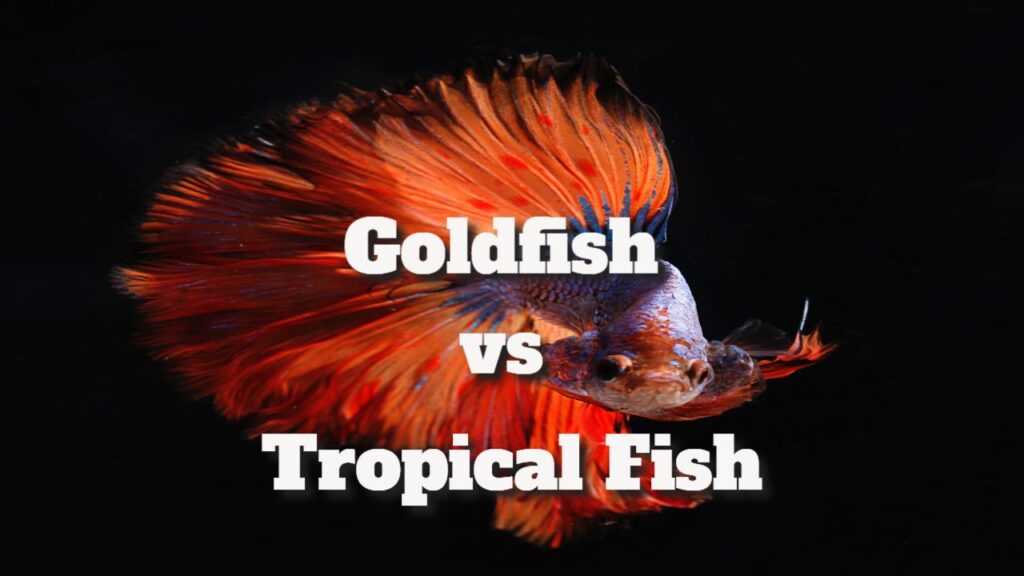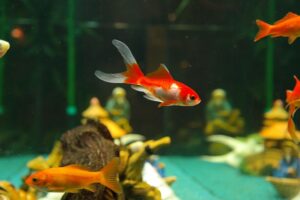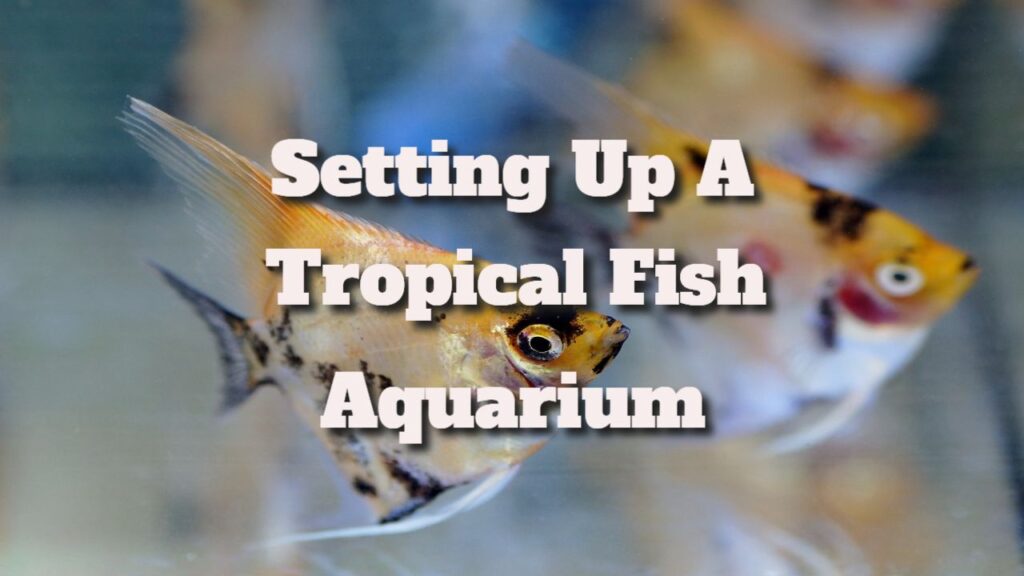Welcome to our guide to Endlers!
What You Need To Know About Endlers: If you’re a fish lover, you’ve heard about endlers and their growing popularity as an aquarium hobby. In this post, we will look at what makes endlers unique and why they have grabbed the hearts of many fish keepers.
Whether you’re a beginner establishing an aquarium or an experienced hobbyist seeking new additions to your collection, this guide will provide you with valuable insights and information.
Endlers, or Poecilia wingei, are small freshwater fish from Venezuela. They are closely related to guppies and share many characteristics, such as looks and habits. However, endlers have unique characteristics that set them apart.
Endlers are popular for various reasons, including their stunning and vibrant colours. These fish come in various vivid colours, including reds, blues, oranges, and yellows. Their brilliant colours make them an eye-catching addition to any aquarium, adding colour and life to the aquatic environment.
Another appealing aspect of endlers is their small size. Unlike larger fish species requiring large tanks, endlers may live in smaller aquariums, making them ideal for hobbyists with limited room. Their small size also means they need less maintenance and are easier to care for, making them perfect for beginners.
Throughout this book, we will explore the world of endlers, discussing their care requirements, breeding habits, and compatibility with other fish species. By the end of this study, you will have a comprehensive grasp of endlers and the skills required to care for this intriguing fish successfully.

What Are Endlers?
Endlers are little freshwater fish that are closely related to guppies. They are indigenous to Venezuela’s streams and rivers, particularly the Laguna de Patos and Laguna de los Patos regions. Endlers are well-known for their vibrant hues and unique patterns, making them popular among aquarium enthusiasts.
Endlers are known for their diminutive stature. They usually grow 1-1.5 inches long, making them excellent for small aquarium installations. Their narrow body and slightly elevated lips give them a distinct appearance.
Endlers are known for their playful and active temperament. They are highly social fish that thrive in groups, so keeping them in schools of at least six fish is ideal. Endlers are also known for their intense energy and willingness to investigate their surroundings.
While endlers and guppies share many characteristics, there are a few key differences between them. One of the most notable variations is their size. Endlers are usually smaller than guppies, which can grow as long as 2-3 inches. In addition, endlers have a more streamlined body shape than guppies, which are rounder.
Another distinction is their colour. Endlers typically have brighter and more elaborate decorations than guppies. Their colours range from vibrant reds and blues to bright greens and yellows. This makes endlers a visually appealing addition to any aquarium.
Endlers are small, multicoloured freshwater fish that resemble guppies. They are unique to Venezuela and are known for their vibrant colours, lively activity, and diminutive stature. Although they resemble guppies, their unique characteristics make them a popular choice among aquarium hobbyists.
Setting Up the Perfect Endler’s Tank
When designing the optimum endlers tank, there are a few key factors to consider. First and foremost, make sure you have the correct tank size. Endlers are little fish, so a tank with a minimum capacity of 10 gallons is recommended. This will provide the endlers plenty of space to swim and thrive.
Next, pay attention to the water’s properties. Endlers prefer slightly acidic to neutral water, with a pH range of 6.5 to 7.5. The water temperature should range between 72°F and 82°F. It is also vital to conduct frequent water quality tests to ensure that ammonia and nitrite levels are zero.
Filtration is another crucial aspect of putting up an Endler’s tank. An effective filtration system can help keep water pure by removing dirt and harmful substances. Mechanical, biological, and chemical filtration is recommended to keep the tank clean and the water’s properties stable.
Decorations are vital in creating an acceptable setting for endlers. Endlers are known to be shy and may seek refuge when confronted, thus providing hiding places is essential. Rocks, driftwood, and constructed caves can be used to create hiding places. Furthermore, growing plants enhance the tank’s appearance while providing cover and oxygen to the fish.
To recap, designing the perfect endlers aquarium needs careful consideration of tank size, water conditions, filtration, and decorations. Endlers’ health and well-being will benefit from a spacious tank, proper water conditions, and the addition of hiding spots and plants.
Feeding and Nutrition
When feeding endlers, giving them a balanced meal that fits their nutritional requirements is critical. To survive and remain healthy, these little fish require a varied diet. Here are some essential aspects to consider:
Dietary Needs
Endlers are omnivores, which means they consume both plant and animal stuff. Their diet should include a variety of high-quality dry foods, live or frozen foods, and fresh produce.
High-quality dry foods.
Look for commercial fish flakes or pellets designed exclusively for small tropical fish. These foods should have an appropriate protein, fat, and carbohydrate balance.
Live or Frozen foods
Endlers will profit immensely from occasionally feeding live or frozen items such as brine shrimp, daphnia, or bloodworms. These meals give essential nutrients and help to replicate their natural diet.
Fresh vegetables.
Introducing some fresh vegetables into their diet can be helpful. Blanched spinach, peas, and cucumber slices are all excellent sources of vitamins and fibre.
Feeding frequency
It is preferable to feed endlers in tiny amounts several times each day rather than in one principal meal. This helps them emulate their natural feeding behaviour and avoid overeating.
Portion Sizes:
In general, assign an amount that your endlers can do in 2-3 minutes. Overfeeding can lead to poor water quality and obesity. Therefore, it’s critical to avoid it.
Feeding endlers a variety of balanced food can help to protect their health and well-being. Remember to keep track of their feeding patterns and adjust the amount and frequency of feedings. Endlers can thrive with proper nutrition, displaying vibrant colours and vigorous activity.
Breeding Endlers
Endlers are a popular and colourful fish that is quite simple to breed. Breeding endlers can be a pleasant experience for fish aficionados, but understanding the process is essential for success. In this post, we will review the conditions for breeding endlers, their mating behaviours, how to care for fry, and how to breed successfully and avoid inbreeding.
Conditions for Breeding Endlers
Before attempting to breed endlers, providing the appropriate environment for them is critical. Here are some essential factors to consider:
Water quality
Endlers flourish in clean, well-maintained waters. Regular water changes and good filtration are required to maintain high water quality.
Temperature
Endlers prefer temperatures ranging from 72 to 82°F (22 to 28°C). To avoid stressing the fish, maintain a consistent water temperature.
Lighting
A natural day-night cycle with a consistent light schedule can encourage endlers to breed.
Plants and Hidden Places
Adding living plants and hiding areas with rocks or driftwood might help endlers feel safe.
Mating Behaviours of Endlers
Endlers are livebearers, which means the females give birth to live fry rather than laying eggs. Understanding their mating behaviours can improve the chances of successful breeding.
Male Displays
Male endlers are recognised for their bright colours and elaborate displays designed to attract females. They frequently execute courtship dances and show off their fins to entice the females.
Female Selection
Females can store sperm from prior matings. Therefore, it is critical to introduce several males to avoid inbreeding and maintain genetic variety.
Gestation Period
Endlers typically have a gestation period of about 28 days, though this might vary. Pregnant females produce a gravid mark near their anal fin, suggesting that they have fry.
Caring for Fry and Avoiding Inbreeding
After the female gives birth, offering good care for the fry is critical to ensure survival.
Separating Fry
To keep adult endlers from devouring the fry, place them in a separate tank or use a breeding net within the main tank.
Feeding Fry
Fry should be fed small, high-quality meals like baby brine shrimp or powdered fry food frequently and in small amounts to ensure their growth and development.
Preventing Inbreeding
New endlers must be introduced into the breeding population regularly to avoid inbreeding and preserve genetic diversity. This can be performed by purchasing new fish or exchanging endlers with fellow breeders.
Endlers can grow and breed successfully if they follow these guidelines and are given the correct environment. Breeding endlers can be a fun and fulfilling hobby that allows you to witness the beauty of new life in your aquarium.
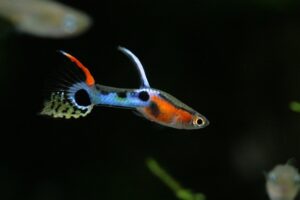
Common Health Issues and How to Prevent them
Endlers are little, colourful fish that are popular with aquarium enthusiasts. While they are generally hardy and easy to care for, they are nonetheless prone to some health problems. By being aware of these common issues and adopting preventative measures, you can secure your endlers’ well-being and help them thrive in their aquatic environment.
1. Swim bladder disorder.
Swim bladder dysfunction is a common health concern for endlers. This condition reduces the fish’s ability to regulate its buoyancy, causing it to swim erratically or struggle to stay upright. To avoid swim bladder disorder, maintain good water quality in your aquarium. This condition can be avoided by regular water changes, ensuring proper filtration, and avoiding overfeeding. If you see any signs of swim bladder disorder, such as difficulty swimming or floating on the surface, consult a fish-specific veterinarian.
2. Fin Rot
Fin rot is another prevalent health issue that Endlers may face. It is distinguished by the degradation of the fish’s fins, which might seem frayed or discoloured. Fin rot can develop due to poor water quality, stress, or injury. To avoid this issue, keep the aquarium clean and well-maintained. Regular water testing and filtration are needed. Furthermore, avoid overcrowding the tank and give endlers a stress-free habitat. If you observe any signs of fin rot, such as ragged fins or redness, consider treating the fish with suitable treatments and contacting a veterinarian if necessary.
3. Ich
Ich, often known as white spot sickness, is a widespread parasite affecting endlers and other fish. It is distinguished by little white spots on the fish’s body and fins. Ich can be introduced into an aquarium via diseased fish or polluted water. To avoid this disease, quarantine new fish before introducing them to the main tank and ensure the water conditions are appropriate for endlers. Maintaining high water quality and creating a stress-free environment can also help avoid ich. See a veterinarian to discuss treatment options if you suspect it in your endlers.
4. Dropsy
Dropsy is a severe health condition that can harm endlers. Underlying problems, including contaminated water, bacterial infections, or organ failure, typically cause it. It is identified by the fish’s enlarged body and projecting scales resembling pinecones. Endlers must be fed well-balanced food and kept in clean water to avoid dropsy. Conducting regular water tests, using sufficient filtration, and avoiding overfeeding are vital. If you notice any signs of dropsy, such as bloating or raised scales, call your veterinarian immediately because it can be challenging to treat.
By taking proactive measures to prevent these common health issues, you can ensure your endlers’ well-being and enjoy their vibrant hues and energetic behaviour for many years. Maintain a clean, stress-free environment, ensure proper water quality, and seek veterinary advice. Your endlers will grow and bring joy to your aquarium with proper care.
Creating a Joyful and Healthy Atmosphere
Several factors must be considered to keep endlers happy and healthy. One of the most critical needs is high water quality. Endlers are sensitive to changes in water parameters. Therefore, testing the water regularly and modifying it as needed is vital. This includes measuring pH, ammonia, nitrite, and nitrate levels. By maintaining these parameters within acceptable limits, you may ensure that your endlers thrive in their surroundings.
Another important consideration is the tank’s temperature. Endlers are tropical fish that like water temperatures between 75°F and 82°F. It would be best to have a good heater to keep the aquarium at a consistent temperature. Temperature variations can create pain and possibly health issues for endlers. Additionally, it is vital to provide adequate lighting for your endlers. A well-lit tank can promote natural behaviours and improve overall well-being.
Tank maintenance is also critical to maintaining a pleasurable and healthy environment for endlers. Regular water changes are essential to remove accumulated contaminants and maintain water quality. Aim to change around 25% of the water every two weeks. In addition, the tank must be cleaned, and any debris or uneaten food must be removed. This minimises harmful bacteria growth while keeping the tank clean and visually pleasing.
To recap, having a happy and healthy habitat for endlers entails maintaining acceptable water quality, giving the optimal temperature, and performing regular tank maintenance. Attention to these elements can help your endlers thrive and enjoy their surroundings.
Compatible With Other Fish Species
When keeping endlers in a community tank, you must consider their compatibility with other fish species. While endlers are generally calm and can coexist with various tank mates, there are a few things to remember to create a pleasant aquarium environment.
1. Endlers are little fish with a maximum size of approximately 1.5 inches. To avoid predatory behaviour or unintended harm, tank mates should be of equal size.
2. Temperament: Endlers are recognised for their peaceful disposition and, therefore, avoid aggressive or fin-nipping species. Find fish with a similar disposition, such as tetras, guppies, or rasboras.
3. Water Parameters: Endlers appreciate slightly alkaline water with a pH of 7.0–8.0. To ensure the best possible health for all fish in the aquarium, find tank mates with similar water parameter requirements.
4. Swimming Level: Endlers are active swimmers who inhabit the middle to higher levels of the aquarium. Consider tank mates that swim at various levels, such as bottom-dwelling corydoras catfish or top-dwelling hatchetfish.
5. Avoid Fin-Nippers: Some fish species nip at other fish’s fins, causing stress and harm. Endlers should not be kept with fin-nipping species such as tiger barbs or bettas.
6. Suitable Tank Mates: Several fish species are compatible with endlers, including
Guppies
Tetras
Rasboras
Corydoras Catfish.
Hatchetfish
Platies
These species have comparable requirements and temperaments, making them good tankmates for endlers.
By considering the size, temperament, water parameters, swimming level, and avoiding fin-nippers, you may create a joyful community tank with endlers and other fish. Remember to properly examine the needs and behaviours of any potential tank mates before adding them to your aquarium.
Tips for selecting and purchasing endlers.
Remember a few crucial points when choosing and obtaining endlers. These guidelines will assist you in selecting healthy endlers from reliable suppliers and avoiding future difficulties.
1. Research credible sources.
Before making a purchase, it is critical to research and locate reliable sources for endlers. Look for long-standing breeders or reliable pet businesses that specialise in fish. Reading reviews and requesting suggestions from experienced fishkeepers can help you identify trustworthy providers.
2. Observe fish behaviour.
When you visit a store or a breeder, take the time to observe the endlers. Healthy fish should be active, swimming around the tank and engaging with their surroundings. Avoid fish that appear lethargic, have clamped fins, or exhibit indications of stress.
3. Assess the appearance of the fish.
Examining the appearance of the endlers is another critical step. Look for fish with bright colours, clear eyes, and healthy fins. Avoid fish exhibiting disease symptoms, such as white patches, damaged fins, or apparent parasites. It is also critical to look for indicators of overcrowding or poor water quality in the tank.
4. Consider tank conditions.
Before bringing endlers home, evaluate the tank conditions. Ensure you have a sufficient tank setup, including proper filtration, heating, and water parameters. Endlers flourish in well-kept tanks with consistent water conditions.
5. Quarantine new fish.
After you’ve chosen your endlers, quarantine them before introducing them into your main tank. This helps prevent diseases or parasite transmission to your present fish. Quarantine tanks should be set up in the same conditions as your main tank, and new fish should be checked for symptoms of disease on a regular basis.
Following these principles increases your chances of selecting and receiving healthy endlers for your aquarium. To ensure a positive and successful fishkeeping experience, always focus on the fish’s well-being and consult reputable sources.
Finally, endlers are fascinating and beautiful fish that would be a great addition to any aquarium. This essay discusses endlers’ origins, physical attributes, care requirements, and breeding procedures.
One important consideration is that endlers are hardy species that can adapt to various water conditions. However, providing them with a suitable environment that resembles their natural home is still vital.
This includes maintaining a constant water temperature and pH and proper filtration and aeration techniques. Endlers’ food is also an essential factor in their care. These omnivorous fish require a varied diet, including live and commercial foods. It is crucial to provide children with a variety of food options so that they may obtain all of the necessary nutrients.
Breeding endlers can be a rewarding experience, but it requires meticulous planning and attention to detail. Segregating males and females is crucial to avoiding overbreeding and preserving fry health.
Furthermore, providing a variety of hiding spots and plants in the aquarium will keep the fry from being devoured by adult fish.
Endlers require adequate care and attention to stay healthy. Following the guidelines described in this article, you can establish a healthy and lively environment for your endlers.
Remember to monitor water parameters routinely, provide a balanced feed, and, if wanted, set up a healthy breeding system. Follow the suggestions in this article to ensure your endlers’ long-term health and pleasure.
These lovely fish will add joy and beauty to your aquarium for many years. So, please enter Endlers’ kingdom and enjoy the wonders it has to offer!
The post What You Need To Know About Endlers appeared first on Unity Pets.
The Article What You Need To Know About Endlers Was Found On https://limitsofstrategy.com
